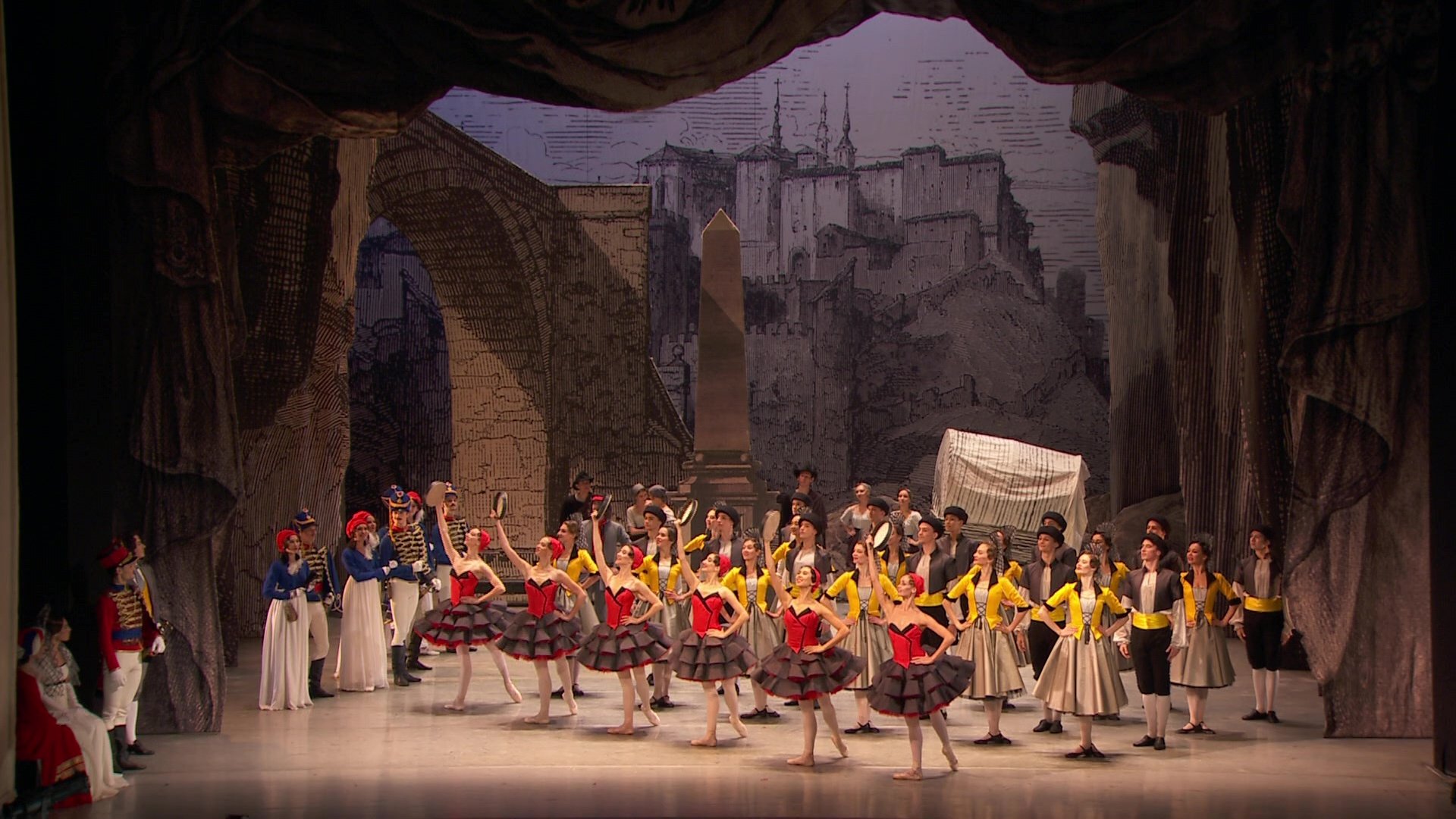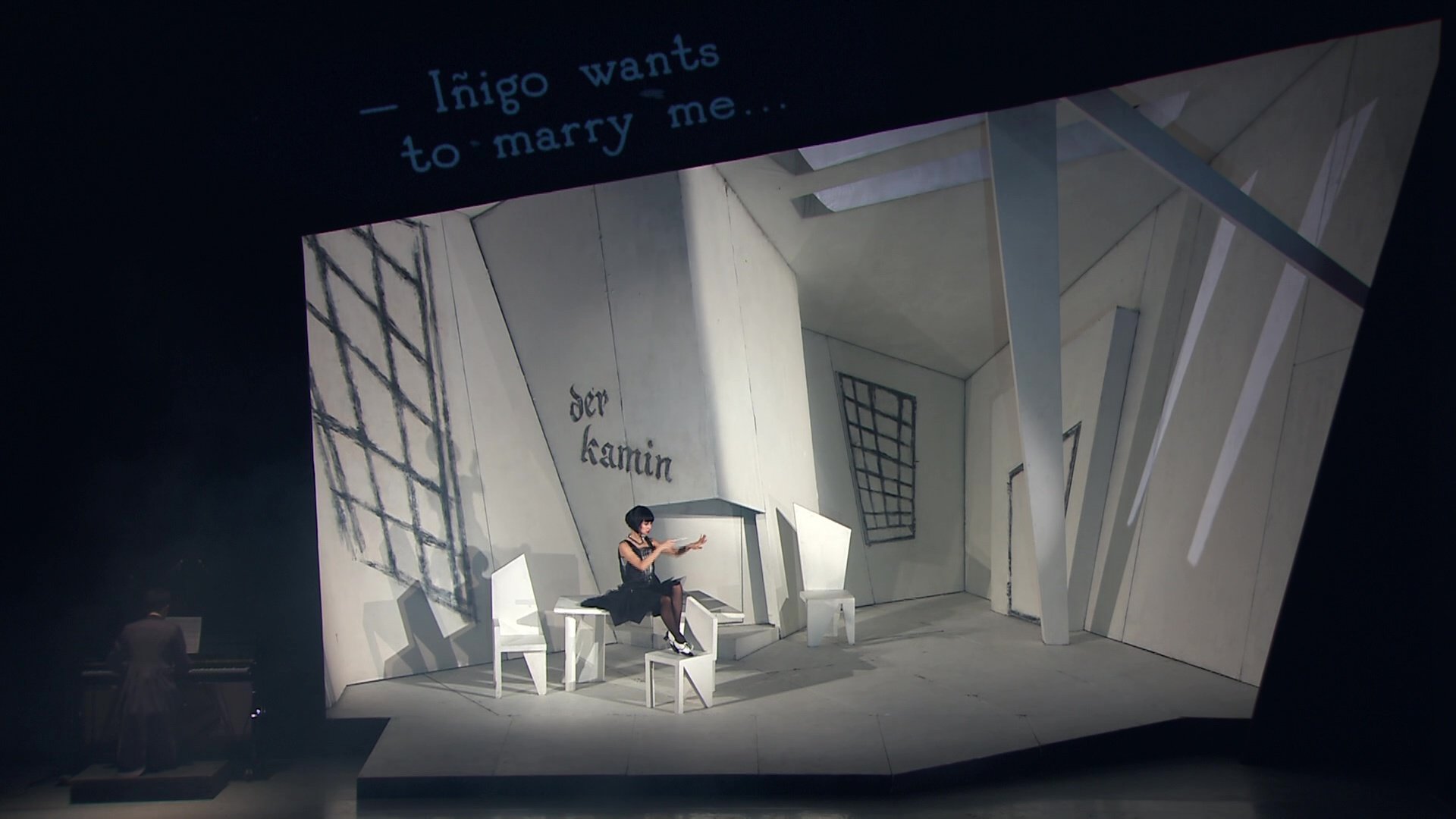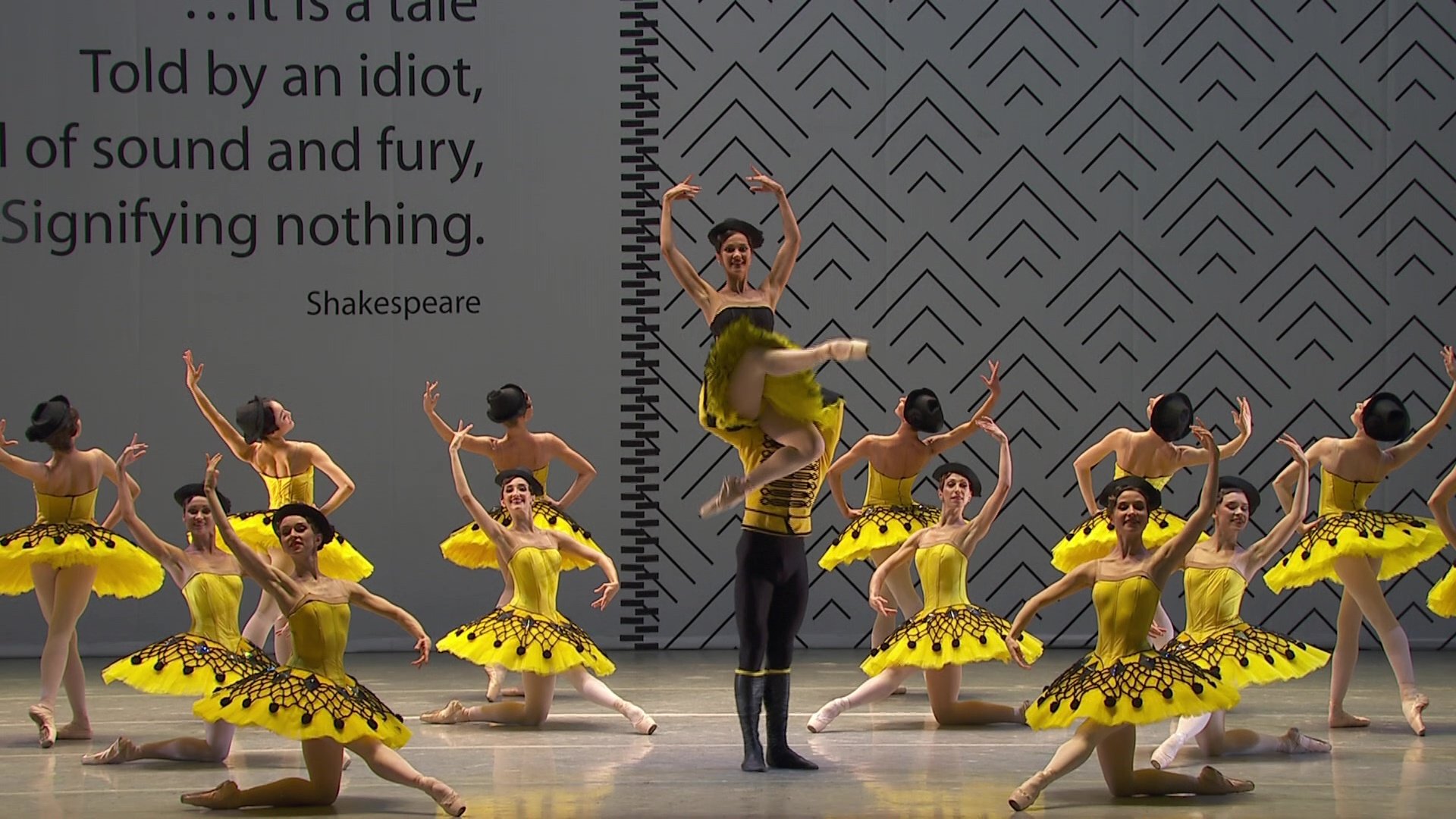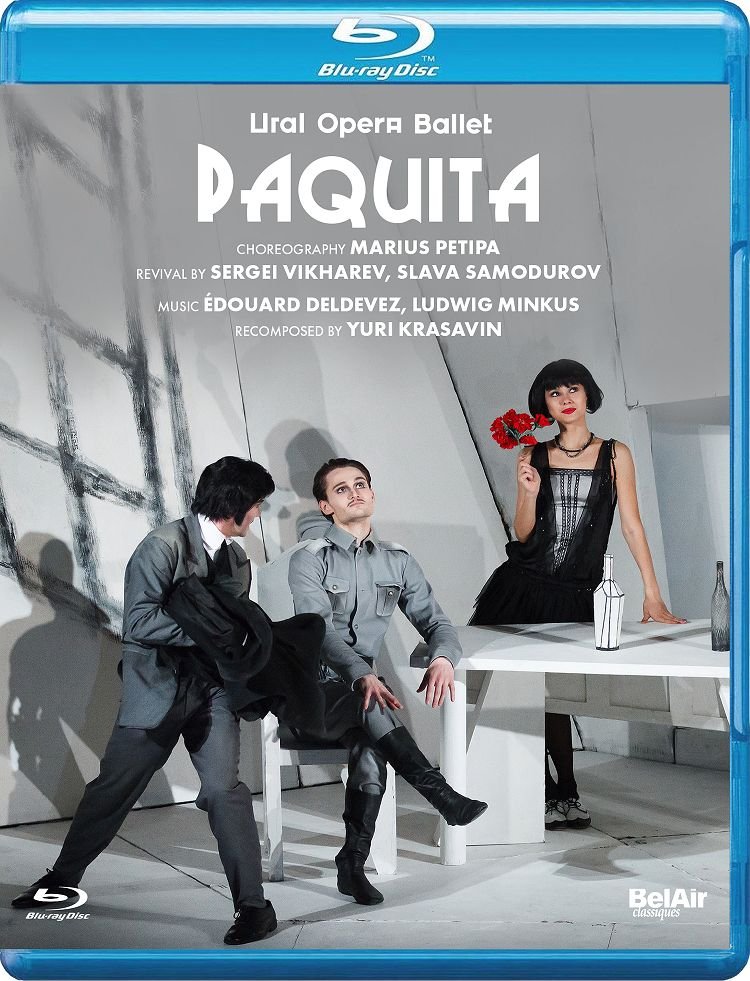
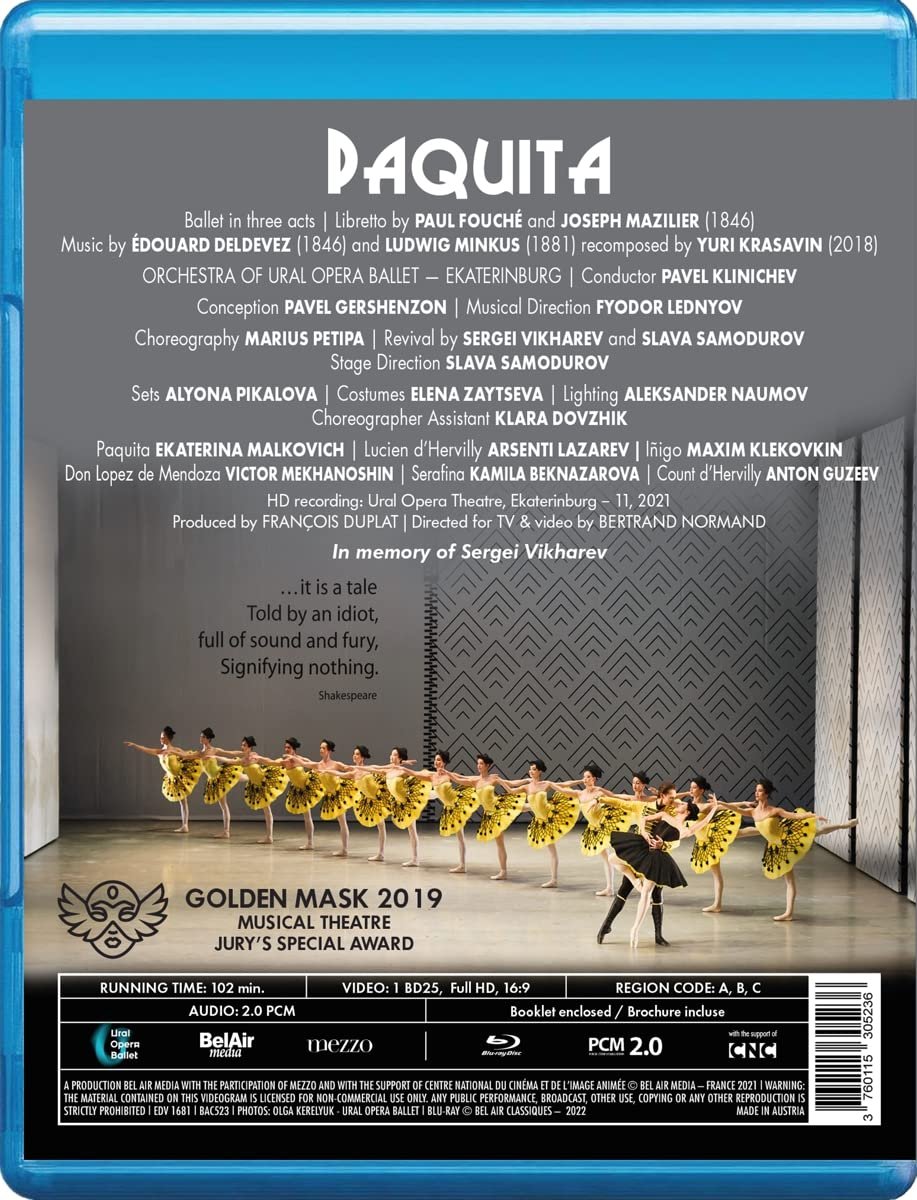
Paquita ballet. Music by Édouard Deldevez and Ludwig Minkus, recomposed by Yuri Krasavin. Choreography by Marius Petipa revived by Sergei Vikharev and Slava Samodurov. Libretto by Paul Fouché and Joseph Mazilier. Conception by Pavel Gershenzon; musical direction by Fyodor Lednyov. Directed 2021 by Slava Samodurov at the Ural Opera Theatre, Ekaterinburg. Stars Ekaterina Malkovich (Paquita), Arsenti Lazarev (Lucien d’Hervilly), Maxim Klekovkin (Iñigo), Victor Mekhanoshin (Don Lopez de Mendoza), Kamila Beknazarova (Seraphine), Anton Guzeev (Count d’Hervilly), Nadezhda Shamshurina (Countess d’Hervilly), and dancers from the Ural Opera Ballet. Pavel Klinichev conducts the Orchestra of the Ural Opera Ballet. Set design by Alyona Pikalova; costumes by Elena Zaytseva; lighting by Aleksander Naumov; choreography assistant was Klara Dovzhik. Produced by François Duplat. Directed for TV by Bertrand Normand. Released in 2022, disc has 2.0 PCM stereo sound. Grade: A -
Paquita was the first full ballet staged by Petipa in Russia (1846). The plot is simple: The governor of Spain in the Napoleon era is trying to get a Gypsy King to kill Lucien, a young French army officer. Paquita, a gypsy girl, saves Lucien’s life. What reward can the poor Gypsy girl get for this? Turns out she was of noble birth herself (raised by the Gypsies as a foundling) and is a cousin of her beloved Lucien. So she gets to marry him after all.
Some dancing from Paquita is famous and in repertory in various places. But the full ballet was considered lost. The Ural Opera Ballet did a lot of detective work to recreate a Paquita. They also were creative in forming Paquita into a show with 4 different settings, each with a separate mise-en-scène. The story carries through all the scenes, but the characters change identity! It’s a bit tricky, but it really keeps you on your toes as you live through Paquita’s saga in the following settings:
Life in Spain under Napoleon
A German expressionist silent motion picture
A theater backstage bar
A grand pas classique with jaunty contemporary costumes
The keepcase booklet has a synopsis that helps you stay on track! Now to screenshots:
We are in Spain under Napoleon. Below left is Don Lopez de Mendoza, the Spanish governor (Victor Mekhanoshin). Below right we see the governor joined by his niece Seraphine (Kamila Beknazarova):
Officers of the French occupation arrive. On the far right is Count d’Hervilly. He has ordered a monument be raised with the inscription: To the memory of my brother Charles d’Hervilly who was killed here with his wife and daughter.” Spoiler Alert! The daughter of Charles was not killed. She somehow survived, was found and raised by Gypsies, and is now known as Paquita. On the left in the red coat is the young officer and son of Count Count d’Hervilly. He is Lucien d’Hervilly (Arsenti Lazarev). So Lucien is a cousin to the Gypsy girl Paquita:
Below Count d’Hervilly insists that his son Lucien should be engaged to marry Seraphine. The Spanish governor is powerless to refuse this, but is secretly enraged that his niece must marry one of the occupiers:
The great beauty Paquita (Ekaterina Malkovich) arrives:
Paquita is being pursued by the Gypsy King Iñigo (Maxim Klekovkin). But Paquita believes she is too good for the King. Paquita has a medallion with a picture of a man that she keeps in her bosom. She thinks the man is her unknown father:
The gypsies are hired to dance for the French party in honor of the engagement of Lucien and Seraphine:
Lucien and Paquita fall into a forbidden love:
The Gypsy King and the Governor both want to see Lucien dead, and this is the end of Act 1:
The Governor and the Gypsy King contrive to send a phony note in which Paquita invites Lucien to visit her. The villains will then ambush and kill Lucien. Oh, dear! What can be done to save Lucien? We are now in Act 2, which is presented in the form of a German silent horror film from the expressionistic era. There is even a piano player next to the “screen.” The words “der kamin” in German mean “The Fireplace.” Paquita is now a showgirl from the 1920s:
And below in the top hat is a wealthy man who has hired an evil assassin. Can you figure out which dancers are playing these roles?
The actors in our silent film are hilarious. And Ekaterina Malkovich does a great job of acting and dancing as a benevolent femme fatale:
Below left Lucien narrowly escapes being poisoned by switching glasses. How clever! Below right someone gets stabbed by 4 thugs. Hint: it isn’t Lucien:
So now we are in Act 3 (scene 1) which is set in the employee snack bar at the opera house. Lucien tells what happened (in mime) and thanks Paquita for saving his life. Lucien’s father is now the Director of the theater:
Now on the far right the patron of the theater and his niece have arrived. The niece is really upset because she sees her fiancé running around with a Gypsy girl. Suddenly the TV announces “News” in Russian:
The news is the dedication of the monument we saw in Act 1. The picture of the man who was killed is shown:
This is the same picture that Paquita has in her bosom! This production now has a spoken part when Paquita says, “Papa!” Now Paquita knows she is not just a Gypsy. She is a member of the French aristocracy and is eligible to marry Lucien to boot!
My daughter always cringes when the subject of cousin marriages comes up. She only knows the half of it. My family is from the Deep South in the United States of America. Before our Civil War, vast plantations (farms with slaves) in the South were the basis of the economy. In those days, plantation owners had lots of children. In order to keep the plantations in the families, some of the daughters were destined at birth to marry their uncles. This makes me cringe today when I think of my beautiful nieces.
The patron of the theater is accused of trying to have Lucien killed. “Who me?”
The patron is arrested. Lately we have been watching videos of Russian secret police agents arresting Russians protesting the special military operation in Ukraine. Many of the agents seem to be dressed in brown with soft caps exactly as shown below. I guess the Patron is off for a free stay at the Lubyanka:
So now we will have an auspicious cousin marriage and it’s time for Act 3, scene 2 with a Grand Pas classique:
I loved the beautiful girls and the cute costumes. I never figured out the Shakespeare quote or the giant zipper:
The Ural Opera Ballet apparently is short of male dancers fully qualified to dance in a grand pas—our star Arsenti Lazarev enjoys quite a harem here:
The Ural Opera and Ballet Company is geographically as far away from Moscow as Maine is from Florida. Since Ekaterinburg is on the eastern edge of the Ural Mountains, it seems it should be called an Asian rather than a European city. We got our first ballet Blu-ray from the Ural Opera Ballet in 2019. That was the Lavrovsky “Marxist” version of Romeo and Juliet featuring a battle of social classes (rather than feuding clans). In this production of Paquita, the Ural Opera Ballet breaks with the past and attempts with substantial success to compete on the world market with something fresh and original.
Out of curiosity, I ran the numbers on all 4 acts of this show. Acts 1 through Act 3, scene 1 suffer from DVDitis. But Act 3, scene 2, the Grand Pas, has a satisfactory pace of 10+ seconds per video segment.
So now to a grade. Start with A+. I normally exclude discs with stereo sound only, but I make an exception here because I’m especially interested in any recordings from Eastern Europe or Asia. But I’ll reduce the grade to A- for the DVDitis noted and the lack of male dancers to participate in the Grand Pas. I look forward to more recordings from the Ural Opera Ballet.
As I write this, we are supposed to be boycotting commerce with Russia in opposition the current special military operation in Ukraine. This would be counter-productive. We should do what we can to support artists in Russia so long as the art in question is not apparently done in service to the oligopoly. Finally, I should mention one other issue brought up by this title. We in the United States are constantly concerned with our problem of endemic prejudice against persons “of color." Isn’t there a similar issue raised in this Paquita of endemic prejudice against itinerant people such as the Gypsies? This is giving me a headache.
Here’s a trailer from BelAir:
OR







